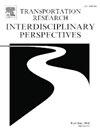TRACtion: A collaborative, community-researcher agenda-setting approach
IF 3.9
Q2 TRANSPORTATION
Transportation Research Interdisciplinary Perspectives
Pub Date : 2025-01-01
DOI:10.1016/j.trip.2024.101291
引用次数: 0
Abstract
This paper describes a collaborative, community-based research development process in Southern California, named TRACtion – Transformative Research and Collaboration. TRACtion draws from community-based participatory research (CPBR) methods used in medicine and environmental research, but it applies these methods to the collaborative development of social problems and research questions in transportation, rather than the development or execution of a single research project. Academic researchers were paired with members of community-based organizations in five working groups, and were charged with identifying research gaps and barriers to a just transition for transportation. We then used the working group priorities as the starting point for focused literature reviews, identifying questions that are already well researched and those where future research could address the themes raised by the working groups. We highlight how the research priorities uncovered through TRACtion systematically differ from the thrust of most current transportation research. Specifically, TRACtion produced research priorities that are more people-centric compared to the current transportation research landscape. By detailing the TRACtion process, and comparing its outcomes to traditional transportation research subjects, this paper aims to provide a model for future CPBR methods in transportation research, and highlight how this model could uncover important, unaddressed research topics.

求助全文
约1分钟内获得全文
求助全文
来源期刊

Transportation Research Interdisciplinary Perspectives
Engineering-Automotive Engineering
CiteScore
12.90
自引率
0.00%
发文量
185
审稿时长
22 weeks
 求助内容:
求助内容: 应助结果提醒方式:
应助结果提醒方式:


